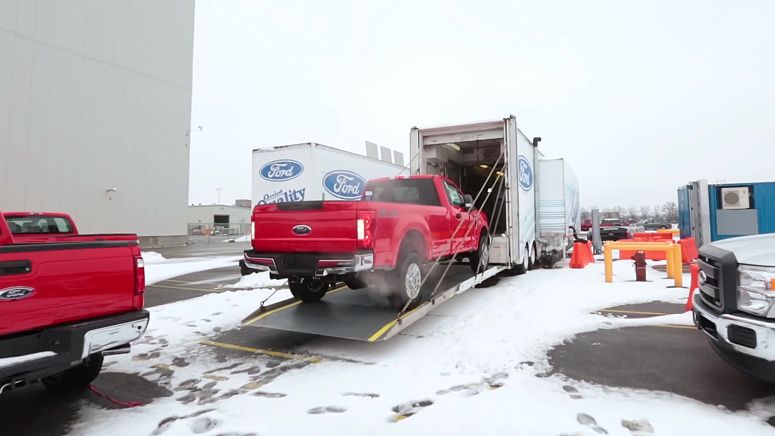The time between a vehicle’s debut and its arrival in showrooms hosts several important parts in its development. It’s during this time that bugs are worked out, nit-picky flaws are ironed out, and initial concerns are addressed. For the 2017 Ford Super Duty, that means a barrage of testing with Ford’->ke31s pair of mobile testing labs.
The labs, basically 18-wheeler trailers with built-in equipment and expandable walls, give engineers the ability to test the pre-production Super Duty trucks as they roll off the line. The two test rigs, called the TEFP and TIPSTER, short for Transportable Environmental four poster and Transportable Instrument panel sound testing Evaluation Rig, torture-test the trucks->ke1311 looking for squeaks and rattles.
The TEFP is a hellish place for the truck. Not only does it shake the truck like its traveling down a dirt road, it can recreate temperatures from -20 degrees to +120 degrees Fahrenheit. As for the TIPSTER, engineers use it to test full instrument panels for squeaks and rattles. After all, there are few things more annoying than a squeaking dashboard.
“Both the TEFP and TIPSTER allow us to test and identify the root causes of squeaks and rattles in a controlled environment, whether its in the hot sun of Arizona or the frigid temperatures in Canada,” says Dave Massengill, Ford’s PVT Squeak and Rattle Engineer at the Kentucky Truck Plant.
Ford is obviously putting a lot of effort into the upcoming Super Duty – something that’s not hard to believe since it, along with the F-150,->ke423 make up Ford’s best selling products. The F-Series->ke1913 trucks have also dominated the full-size truck segment in terms of sales, going on nearly 40 years. Ford literally can’t afford to make mistakes with these trucks.
Continue reading for more information
.

